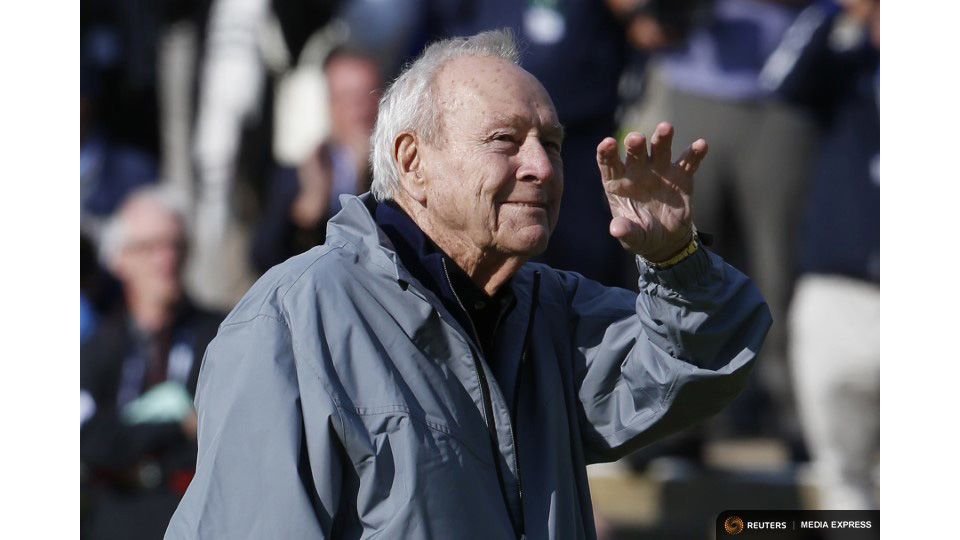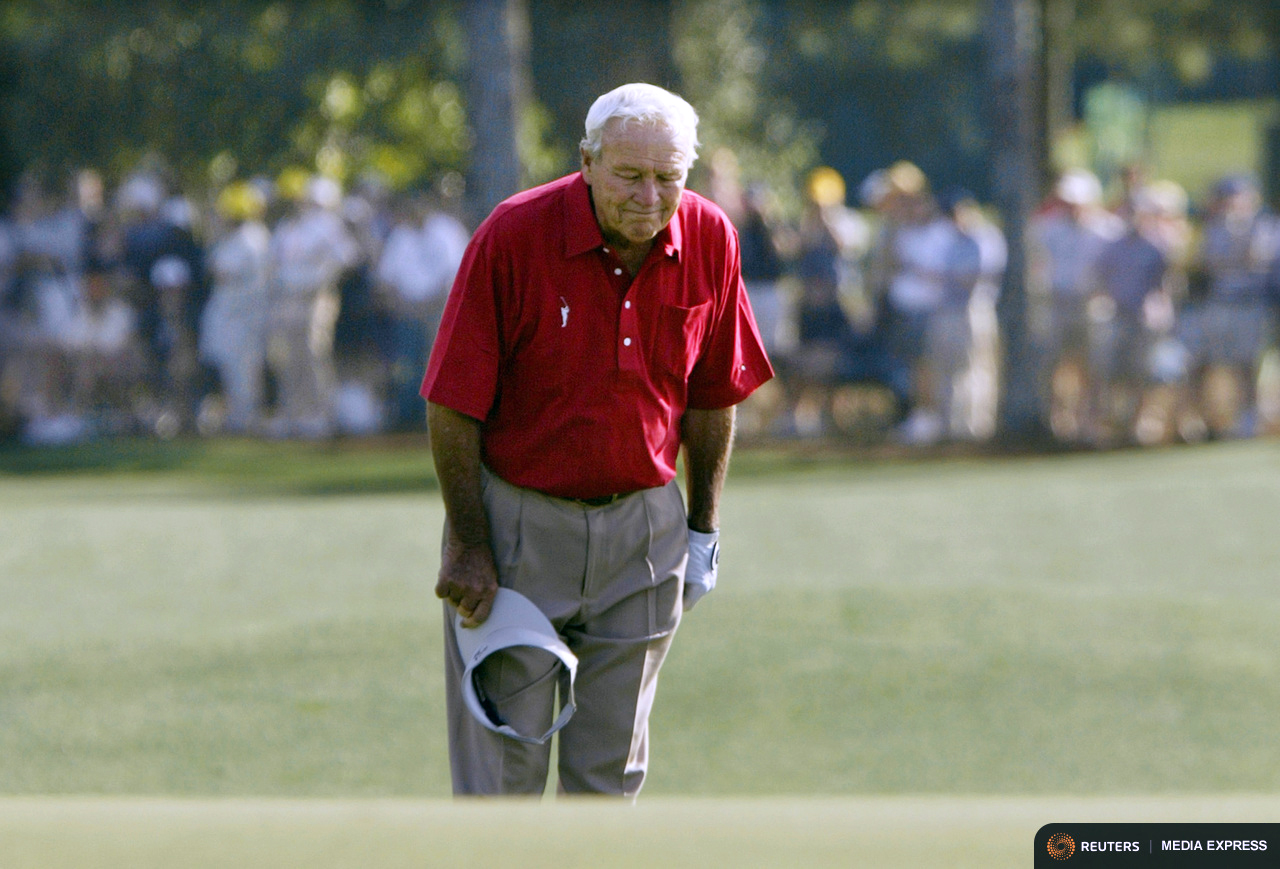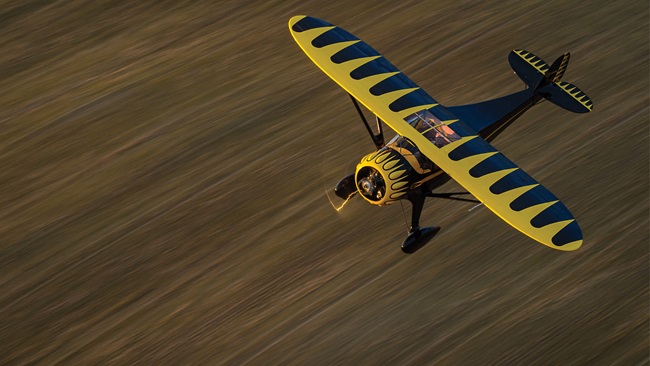Golf, aviation legend Arnold Palmer dies
Palmer cut a swath through the golfing world in the 1960s as he ushered the sport into prime time during a four-year roll of dominance. He was named Sports Illustrated magazine’s “Sportsman of the Year” in 1960. Later in life, he set several aviation records. Known to his army of fans simply as “Arnie,” Palmer has both a golf tournament and an airport named after him.
His success on the links allowed Palmer to begin flight lessons in a Cessna 172 at his Latrobe, Pennsylvania, hometown airfield, which is now named Arnold Palmer Regional Airport. Near Palmer’s hometown and the golf course where he learned as a youth, his presence among aviators will be forever secured by the airport’s Pleez Two departure that directs pilots past the ARNIE intersection southwest of Palmer tower near the Allegheny VOR.
He piloted a Cessna Citation X to a closed-course speed record of 476 knots in 1997, and set a round-the-world speed record in 1976 when he circumnavigated the globe in 57 hours, 25 minutes, and 42 seconds, according to Golf Digest.
Fellow golfers and good friends Jack Nicklaus and Gary Player, who both inherited the aviation bug from Palmer, reunited with the legend in April at the Masters tournament where he supervised the tournament’s ceremonial first tee strokes. During their heyday, Nicklaus, Player, and Palmer, "The Big Three" of golf, operated from business jets.
“He was one of my best friends, closest friends, and he was for a long, long time," Nicklaus said in a statement. "I will miss him greatly.”
"We all know what a tremendous golfer Arnold Palmer was, but he was also immensely respected as an aviator,” said AOPA President Mark Baker. “He understood the value of general aviation and was a vocal advocate for personal and business flying. As a longtime supporter of AOPA, and a charter member of the AOPA Foundation President's Council, he took a leading role in promoting the safety and utility of general aviation. I count myself lucky to have known him. He will be deeply missed by the GA community."
In a tribute posted online, Billy Payne, chairman of the Augusta National Golf Club and the Masters tournament, echoed many in the golfing world by saying the four-time Masters winner “was our game’s finest ambassador, and a hero to generations of people throughout the world.” He competed in the tournament for 50 years and often flew himself to nearby Daniel Field in Augusta, Georgia, where general aviation aircraft are parked nose to tail during the annual April tournament.
EAA President Jack Pelton cemented a long friendship with Palmer when Pelton was the CEO of Cessna Aircraft. “So sad to hear today we lost a golf legend, one of the greatest gentleman I have ever known, and an advocate for general aviation,” Pelton wrote in a statement. “Arnold Palmer was a supporter of EAA. More importantly for me he was the hero and role model for all the things our country was founded on. Thank you Arnie.”
Additional tributes to Palmer as a golfer and as an aviator began to surface as news broke of his death. “Mother took me to our little airport to see Arnie fly in, then we had tickets to his exhibition,” Doug Barding wrote to Palmer’s website, remembering a 1962 encounter. “As a 10-year-old just beginning to play, Arnie was a true inspiration and my could he hit the golf ball. Ever since that day I have felt like Arnold was a member of the family. Thanks for the memories Mr. Palmer, RIP.”

Palmer led the way for fellow Masters champions Phil Mickelson and Charl Schwartzel, and other athletes including NASCAR’s Tony Stewart and the NFL’s Tom Brady, to pursue pilot certificates. Flying GA allowed them to efficiently move from one event to another without being tied to commercial aviation schedules.
Professional Golf Association competitor Morgan Hoffmann credits Palmer with inspiring aviation for the current generation of golfers. "I got lucky enough to know Arnie over the years and we talked a lot about aviation,” Hoffmann told AOPA for an article on the 27-year-old golfer’s aviation inspiration. He noted that Palmer worked his way up from single-engine Cessnas to "flying Gulfstream G5s. It’s really an inspiration for me to hear that."
Palmer was a well-known philanthropist who supported many causes. He defended corporate aviation in 2009 with a series of advertisements jointly sponsored by the National Business Aviation Association and the General Aviation Manufacturers Association “to educate policymakers and opinion leaders about the value of business aviation to citizens, companies, and communities across the United States,” wrote AOPA Editor in Chief Tom Haines. At the time, GA was under attack from Congress after the CEOs of automakers flew corporate jets to Washington, D.C., to ask for taxpayer bailout money during a recession.
“I know the value of business airplanes,” Palmer told attendees at the NBAA convention’s opening session that year. “I know what they have done for me and my companies. I know how important they are to my hometown. And I know how important they are to this country. So I wanted to speak out and help set the record straight.”
Palmer’s determination and flair for drama played well for audiences in person and on TV. His penchant for hitching up his pants before sinking a long putt or a tricky chip shot made the former Coast Guard yeoman one of sport’s first big stars. He earned legions of loyal fans that cheered “Arnie, Arnie,” and stuck out their hands to greet the legend long after he retired from professional golf with 92 wins, nearly $7 million, and a 2004 Presidential Medal of Freedom.

Years after he left golf’s stewardship to another generation Palmer still had a smile and a wave for fans as he walked countless fairways during celebrity appearances, tipping his cap every few yards. He was often spotted signing autographs for hours.
AOPA corporate pilot Mark Evans said he was learning about Cessna’s Citation CJ3 jet at Flight Safety International in Orlando, Florida, when the golfing great alighted from a black Cadillac Escalade for recurrent training in his Citation X. “He was close to 80 years old at the time and he’d greet everybody in the morning,” said Evans. “That ready smile of his put everyone at ease and started the day just right.”




